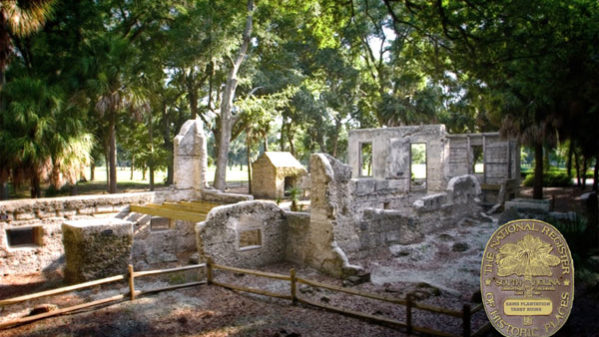The Sams Plantation Complex Tabby Ruins is now listed on the National Register of Historic Places.
The National Register of Historic Places (NRHP) is the official list of the Nation’s historic places worthy of preservation. Authorized by the National Historic Preservation Act of 1966, the National Park Service’s National Register of Historic Places is part of a national program to coordinate and support public and private efforts to identify, evaluate, and protect America’s historic and archeological resources.
In 1988, the South Carolina Department of Archives and History recognized the Sams Plantation Complex Tabby Ruins as a landmark of significant historical importance. They submitted a National Register of Historic Places Registration Form and on October 8, 1988 the NPS accepted the historic site as “eligible for listing” on the National Register of Historic Places (NRHP).
At that time, ALCOA, the owner and developer of Dataw Island, objected to have the historic site formally listed on the National Register. Dataw Island was in the development phase and unknown factors of potential government interference, along with concern about the effect on a closed gated community, most likely prompted ALCOA’s objection to a formal NRHP listing.
Early in 2010 the Dataw Historic Foundation initiated a project to secure the formal listing and recognition. An in depth review with the Dataw Island Owners Association and the Dataw General Manager determined that lifting the original owner’s objection to listing would incur no additional regulations, would not require opening the island, but would have several benefits. Benefits of listing include recognition, “pride of ownership”, and being able to display a bronze plaque acknowledging the NRHP designation.
On October 11, 2010 the DIOA Board unanimously voted to list the Sams Plantation Complex on the NRHP. The National Parks Service formally listed the Sams Plantation Complex Tabby Ruins on the National Register of Historic Places on March 4, 2011.


